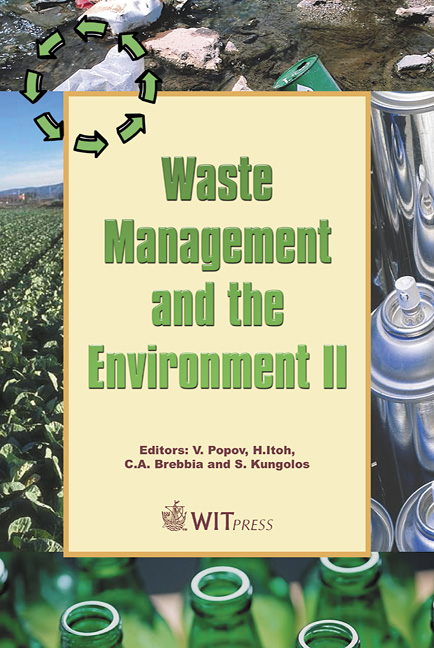Coagulation-flocculation As A Submerged Biological Filter Pre-treatment With Landfill Leachate
Price
Free (open access)
Transaction
Volume
78
Pages
10
Published
2004
Size
292 kb
Paper DOI
10.2495/WM040211
Copyright
WIT Press
Author(s)
A. Gálvez Perez, A. Ramos, B. Moreno & M. Zamorano Toro1,2
Abstract
Landfill leachate may cause environmental problems if it is not properly managed and treated. An appropriate treatment process of landfill leachate often involves a combination of physical, chemical and biological methods to obtain satisfactory results. In this study, coagulation-flocculation was proposed as a pretreatment stage of partially stabilized landfill leachate prior to submerged biological filters. Several coagulants (ferric, aluminium or organic) and flocculants (cationic, anionic or non-ionic) were assayed in jar-test experiments in order to determine optimum conditions for the removal of COD and total solids. Among the cationic flocculants, that of highest molecular weight and cationicity (CV/850) showed highest removal efficiencies (15% COD and 8% TS). Organic and aluminium coagulants showed better results than ferric coagulants. Coagulant removal efficiencies were between 9% and 17% for COD and between 10% and 15% for TS. Doses of 1 ml/l of coagulant were preferred. Some combinations of coagulant and flocculant enhanced the process. The best combinations obtained were FeCl3+A30.L, Ferriclar+A20.L, SAL8.2+A30.L and PAX-18+A30.L, which presented COD removal efficiencies between 24% and 37% with doses between 10 and 18 ml/l. Keywords: landfill leachate, coagulation-flocculation, submerged biological filter pre-treatment.
Keywords
landfill leachate, coagulation-flocculation, submerged biological filter pre-treatment.





